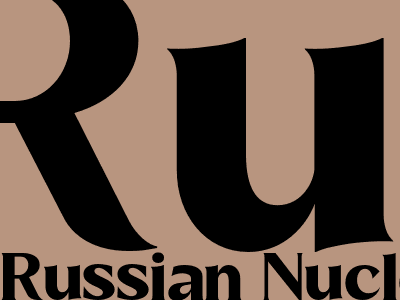
Russian Nuclear Deception
Putin's Nuclear Arsenal: A House Built on Sand?
For decades, Russia has been posturing as the world's second mightiest nuclear power. Its nuclear arsenal, composed of an array of intercontinental ballistic missiles (ICBMs), submarine-launched ballistic missiles (SLBMs), and strategic bombers, has been at the core of its military strategy and a constant source of geopolitical tension.
However, a closer examination reveals a stark contrast between Russia's nuclear rhetoric and its actual capabilities. The true state of Russia's nuclear arsenal raises serious questions about the effectiveness and reliability of its nuclear deterrence.
Diminished Deterrence: The Gap between Hype and Reality
The backbone of Russia's nuclear arsenal, its ICBMs, are aging and many are nearing the end of their operational lifespans. As these missiles retire, Russia has struggled to replace them with modern equivalents, leading to a steady decline in the number of operational ICBMs.
Furthermore, Russia's SLBMs, launched from its fleet of aging submarines, face similar challenges. Many of these submarines are also nearing retirement, and Russia's shipbuilding industry has been plagued by delays and cost overruns.
Compounding these issues is the fact that Russia's nuclear modernization program, designed to address these deficiencies, has been hampered by corruption, mismanagement, and a lack of funding. As a result, Russia's nuclear arsenal is increasingly becoming a paper tiger, with a dwindling number of operational warheads and delivery systems.
Nuclear Brinkmanship: The Risks of Deception
Russia's continued reliance on an aging and unreliable nuclear arsenal raises the specter of a dangerous miscalculation. As its nuclear capabilities diminish, the risk of Russia being tempted to resort to nuclear weapons in a conflict increases, especially if it perceives its conventional forces to be at a disadvantage.
This nuclear brinkmanship is exacerbated by Russia's continued saber-rattling and threats to use nuclear weapons in response to perceived threats from the West or its neighbors. Such rhetoric only serves to further destabilize an already tense geopolitical landscape.
Conclusion: Reassessing the Russian Nuclear Threat
The true state of Russia's nuclear arsenal paints a troubling picture of an aging and unreliable force. The gap between Russia's nuclear rhetoric and its actual capabilities raises serious questions about the effectiveness of its nuclear deterrence and the risks associated with its continued reliance on nuclear weapons.
It is imperative for both Russia and the international community to reassess the Russian nuclear threat and work towards a more stable and secure nuclear environment. This will require addressing the obsolescence of Russia's nuclear arsenal, reducing nuclear tensions, and promoting transparency and cooperation in the realm of nuclear weapons.